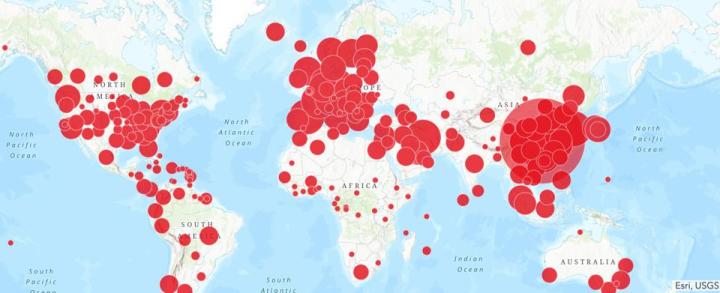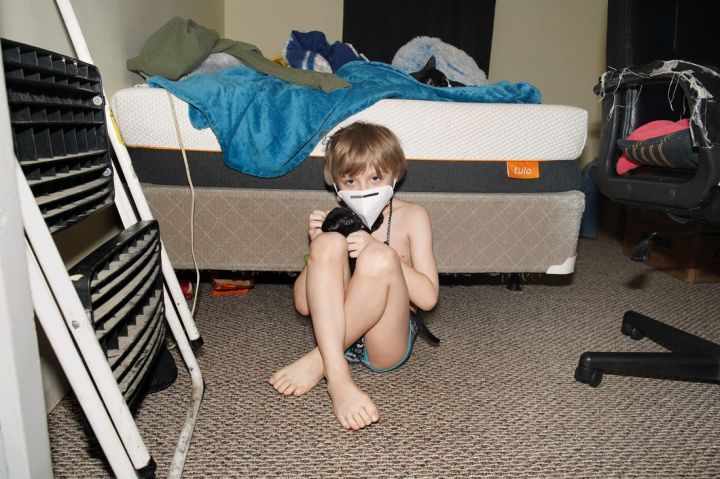Originally, this was supposed to be a single article, but it soon ballooned, so I decided to split it into parts.
So, how are you enjoying World War III so far?
Not too well, I imagine.
I understand.
It’s been a crazy year.
Insane, really.
You know, during my childhood, I was intentionally propagandized to be constantly scared shitless that World War III could come at a moment’s notice in the form of nuclear missiles raining down from the sky.
Other so-called experts excitedly debated the minutiae of World War III starting in the Fulda Gap, heralding global death and destruction by “conventional” tanks, bombs, and guns.
Yet other well-paid astrologers were expecting that War War 3 would be fought with robots and other high-tech death gadgets.
They all sure have eggs on their faces now, eh?
It turns out that we didn’t need those nukes, tanks, bombs, and murder robots after all.
Instead of going through all the trouble to fight a war against someone else, we figured out that it’s much easier if (almost) every country blows itself up. And to do that, all that was required was a few pieces of legislation.
Sure saved a lot of time and effort, that’s for sure.

No need to wait for the Germans or the Russians or the Chinese or Americans to come over and annihilate your economy, social cohesion, mental health, and political system.
Way faster if you do it to yourself.

Best of all, unlike the first two World Wars where a few sane nations managed to escape the horror, during this war, everybody gets to suffer.

And the fun has only just begun!
But How Did We Ever Get in This Mess in the First Place?
That’s a very good question. The short answer is “deluded wannabe wizards.”
A more comprehensive answer is going to take some time. And to do that, we need to start during the “Renaissance” period in Europe.
Let’s rewind the clock to Great Fire of London in 1666 so that we can catch a glimpse at how modern science was born (or, at least, the Western version of it).
England was on the threshold of two worlds in those days.
On one hand, London was full of semi-literate racists and religious bigots (see my post The True and Exact Narrative of the Horrid Plot and Conspiracy of the Popish Party for some “laughs”) living in a city that reeked of raw sewage.
On the other hand, towering figures of science such as Isaac Newton and Robert Hooke were active members of the Royal Society, the first scientific organization of its kind in the world, making contributions that founded our modern way of life.
And it was the elusive Robert Hooke who, among his (literally) hundreds of other achievements, was one of the first people to systematically use a microscope to study microorganisms (bacteria).
But neither Hooke nor anyone else in the world suspected that those tiny “animacules” (Hooke’s original name) seen under his microscope could have any effect on the macroscopic world of humans, animals, and plants.
Hooke’s microscope was, quite literally, just a reversed telescope. And if telescopes were used for seeing faraway worlds, it made sense that microorganisms would be thought of as “far away” in their world as well.
Therefore, it seemed completely preposterous to everyone involved that something so tiny that you couldn’t even see it without a microscope could ever have any kind of impact in the “big world” at all.
Oopsies!
The Influence of the Stars
In Europe, illnesses in the 17th century were generally believed to be the result of an “imbalance” of the four humors because that’s what the ancient “experts” taught.
Therefore, if you had a bad cough or a stuffy nose, you needed to “balance out” an excess/lack of one of the humors in order to become healthy again.
And that was a fine and grand old theory for individual people.
But when a disease outbreak occurred, affecting hundreds or thousands of people at the same time, then clearly, it couldn’t be a case of everyone simultaneously developing “unbalanced” humors.
No, of course not. Utterly preposterous.
That’s because everyone knew that disease outbreaks were caused by the “influence of the stars.”
In the original Italian, it’s “della influenza degli astri” or just “influenza” for short.
In English, medical doctors usually still say “influenza” but most laypeople have shortened it to “flu” these days.
In French (and later, Romanian and Russian), these “star diseases” were said to “grip” (constrict) the throat, so it became known as the “grippe” (gripa in Romanian), a somewhat archaic name previously used more commonly in English.
Today, the “star influence” disease is one of the most endemic in the world, yet the medieval names persist.
A Deadly Stink
Another concurrent theory in Europe in the 17th century for what caused disease outbreaks was known as “miasma.”
It went by a number of different names, including “night air,” but its central tenet was that diseases, particularly infectious diseases, were caused by bad smells.
This was nonsense, of course, but it was considered to be “scientific” in its day. Indeed, modern scientists like to retcon the whole thing by saying that, since some unhygienic environments that contribute to infectious diseases do smell bad, the “miasma” theory was, at least in part, intuiting a scientific truth.
Hilarious. But at least the miasma theory was better than blaming disease outbreaks on witchcraft as those ignorant barbarians were still doing over in America at the time.
And just like the “influence of the stars” theory of disease, the “miasma” theory went on to influence the development of epidemiology and our understanding of public health.
To wit, in archaic Italian, the term for “bad air” is “mal’ aria” from which we get the name for the disease “malaria.”
We’ll dig a lot deeper into the history of malaria treatment, outbreaks, vaccination, and therapies, later on in this series.
But it’s worth noting here that malaria is yet another holdover from archaic superstitions still present in “modern” science.
And we’re going to see a whole lot more of that in this series.
Click here for Part 2 of this series.


I never read a more idiotic scribbling in my life.
LikeLike